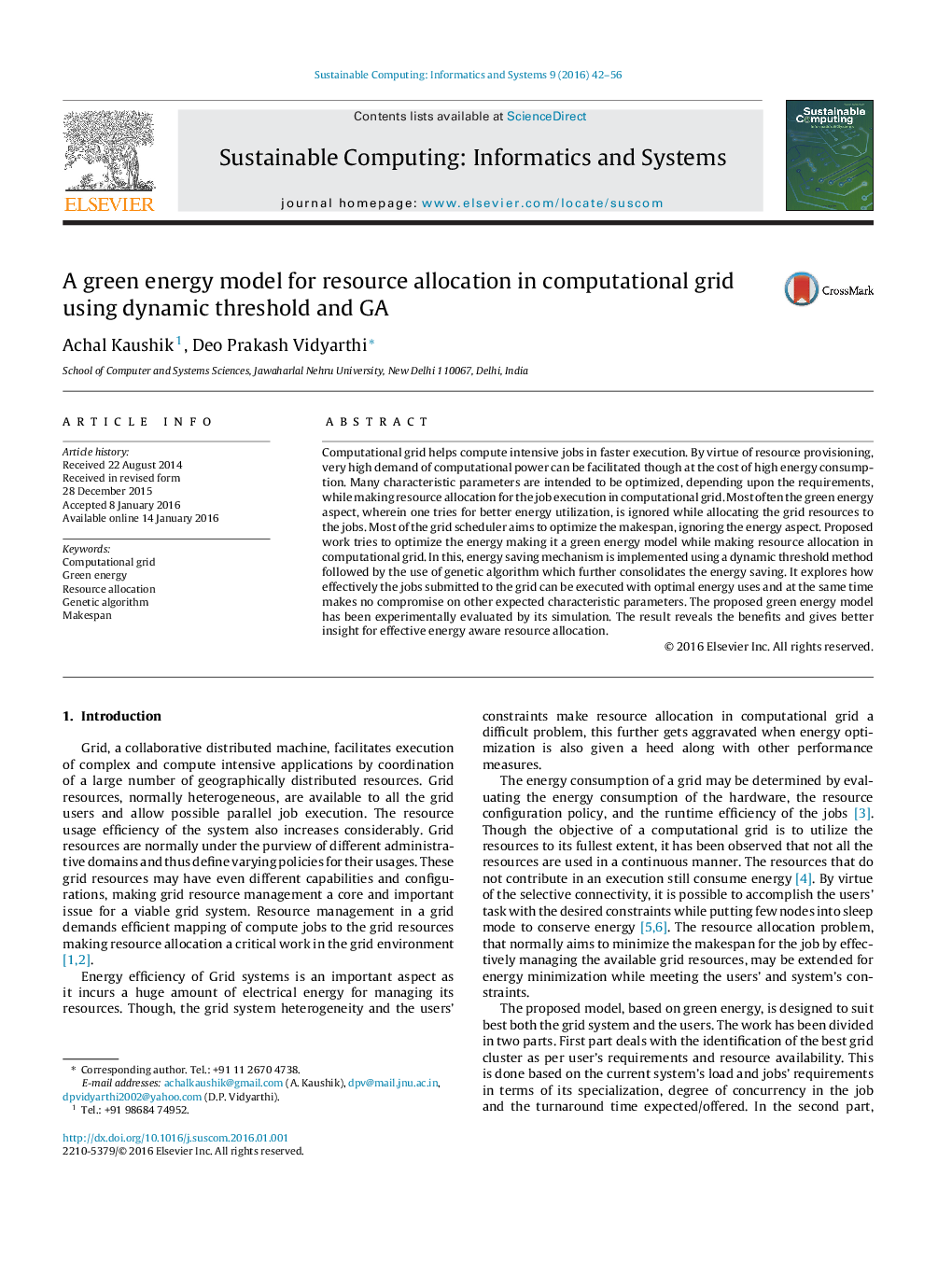| Article ID | Journal | Published Year | Pages | File Type |
|---|---|---|---|---|
| 493618 | Sustainable Computing: Informatics and Systems | 2016 | 15 Pages |
•Energy saving in grid environment is emphasized using the sleep strategies.•Load Balancing Allocation method is used for maintaining the minimum finish time of the submitted job.•Dynamic allocation policy is used to redistribute the light loaded nodes to the other nodes while still maintaining the job completion time.•Genetic Algorithm based Allocation (GAA) method is used to optimize the allocation on the active nodes with a better recombination of modules on the nodes.
Computational grid helps compute intensive jobs in faster execution. By virtue of resource provisioning, very high demand of computational power can be facilitated though at the cost of high energy consumption. Many characteristic parameters are intended to be optimized, depending upon the requirements, while making resource allocation for the job execution in computational grid. Most often the green energy aspect, wherein one tries for better energy utilization, is ignored while allocating the grid resources to the jobs. Most of the grid scheduler aims to optimize the makespan, ignoring the energy aspect. Proposed work tries to optimize the energy making it a green energy model while making resource allocation in computational grid. In this, energy saving mechanism is implemented using a dynamic threshold method followed by the use of genetic algorithm which further consolidates the energy saving. It explores how effectively the jobs submitted to the grid can be executed with optimal energy uses and at the same time makes no compromise on other expected characteristic parameters. The proposed green energy model has been experimentally evaluated by its simulation. The result reveals the benefits and gives better insight for effective energy aware resource allocation.
